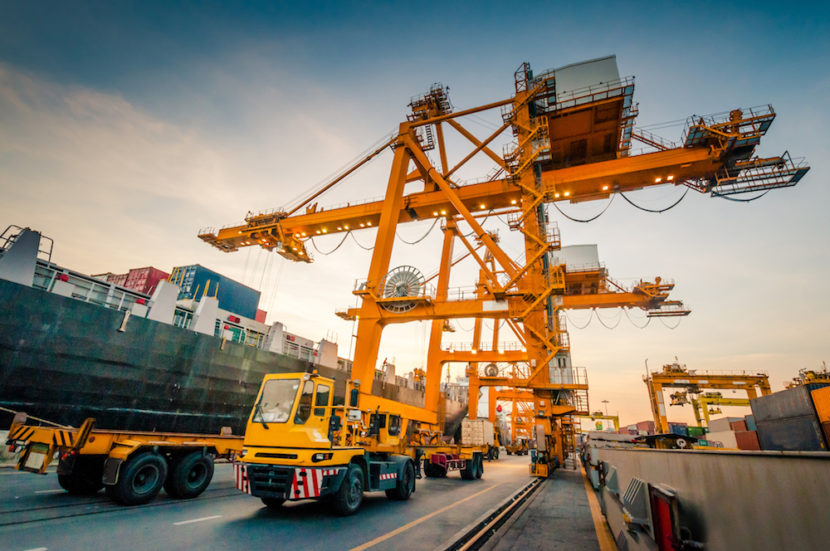Sustainability Toolkit for Trade Negotiators: Tapping the Potential of Trade and Investment Agreements for Achieving Environmental Goals

Regional and bilateral trade and investment agreements have great untapped potential for helping to facilitate the transition to a green economy and achieving the 2030 Sustainable Development Agenda. Negotiators are recognizing this potential to contribute to the achievement of national and international environmental objectives. In recent years, several notable pacts have pushed boundaries in such diverse areas as fisheries subsidies,[1] trade in green goods,[2] and the conservation of endangered species.[3] These innovative deals have not only influenced subsequent regional agreements, but are also driving progress at the multilateral level, such as when the work on green goods at the Asia–Pacific Economic Cooperation (APEC) sparked World Trade Organization–based negotiations on a green goods agreement.[4]
There is also the potential for significant negative impacts, particularly when we look beyond strictly environmental provisions to those elements that affect the environment: the “behind the border” trade rules which restrict how states regulate in areas such as investment, intellectual property rights, services, government procurement and subsidies. Trade and investment—and the agreements that govern them—have a powerful economy-wide potential for change. The structural changes wrought by trade and investment can help move economies towards greater efficiency and wider dissemination of environmentally friendly technologies. But they can also perpetuate and intensify investment in polluting and resource-intensive economic activities, and discourage beneficial regulations. We argue that trade and investment rules must go beyond positive efforts such as liberalization of green goods to also provide national governments with the legal flexibility to adequately protect the environment.
To help policymakers craft trade and investment agreements that support sustainable development objectives, the International Institute for Sustainable Development (IISD) and the United Nations Environment Program (UNEP) created the Sustainability Toolkit for Trade Negotiators (http://www.iisd.org/toolkits/sustainability-toolkit-for-trade-negotiators). Launched in March 2017 at the Ministerial meetings of the Partnership for Action on Green Economy (PAGE),[5] the toolkit shows how specific provisions within the agreements might better serve those broad goals, citing over 200 text examples drawn from some 90 existing agreements.
Different states will find different appropriate responses to the nexus of environmental and trade and investment policy. This toolkit ensures that negotiators of trade and investment agreements can at least be aware of their options for environmental provisions.
Designed to be an easily-accessible reference guide, the toolkit can help negotiators already schooled in the issues quickly find answers to specific questions. It provides a brief overview of each issue, then discusses options and presents examples from existing or model treaties. For instance, it covers emerging trends in relation to investor responsibilities and obligations and provides examples of clauses relating to investors’ compliance with host state laws and regulations on environment, labour, tax and anti-corruption. While trade and investment treaties should not be designed to diminish the role of domestic law applicable to investors, they can contribute to filling gaps or bolstering compliance. This can be achieved, for example, by limiting access to arbitration in certain cases of non-compliance, or by allowing for counterclaims (see for example Article 11 of India’s Model BIT).[6]
The toolkit also provides a broad overview of key issues. It begins with framing questions that drafters will need to consider: what sort of architecture, what sort of commitments? It then examines provisions that are strictly environmental in nature, such as treatment of environmental standards, in relationship to multilateral environmental agreements. It then considers those aspects of treaty text that are not explicitly environmental, but which may have significant impacts on the environment and environmental regulation: investment, government procurement, services and intellectual property rights. In closing, it looks at the process for conceiving, negotiating and implementing regional trade and investment agreements (RTIAs). The toolkit will be regularly updated as new treaties offer interesting approaches to the issues covered.
Trade and investment flows are not ends in and of themselves, but rather are means to an end: enhanced human well-being. Any conceivable definition of human well-being must go beyond immediate personal wealth to include, among other things, preservation of the environmental services that underlie our economy and future development. So if trade and investment law and policy are to achieve their full potential for enhancing human well-being, they must be aligned with priorities that go beyond simply increasing flows of goods, services and funds.
Author
Aaron Cosbey is a development economist and senior associate at IISD with more than 25 years of experience in the areas of trade, investment and sustainable development.
Notes
[1] Trans-Pacific Partnership Agreement [TPP], Art. 20.16(5). Retrieved from http://www.iisd.org/toolkits/sustainability-toolkit-for-trade-negotiators/wp-content/uploads/2016/06/TPP-Final-Text-Environment.pdf#page=15.
[2] Agreement between New Zealand and the Separate Customs Territory of Taiwan, Penghu, Kinmen, and Matsu on Economic Cooperation [New Zealand–Taiwan free trade agreement (FTA)], Chapter 17, Art. 3.2(a). Retrieved from http://www.iisd.org/toolkits/sustainability-toolkit-for-trade-negotiators/wp-content/uploads/2017/04/NZ-Taiwan-FTA.pdf#page=185.
[3] TPP, Art. 20.17. Retrieved from http://www.iisd.org/toolkits/sustainability-toolkit-for-trade-negotiators/wp-content/uploads/2016/06/TPP-Final-Text-Environment.pdf#page=18.
[4] Asia–Pacific Economic Cooperation (APEC). (2012). 20th APEC Economic Leaders’ Declaration, Vladivostok, Russia, Annex C, APEC List of Environmental Goods. Retrieved from http://www.iisd.org/toolkits/sustainability-toolkit-for-trade-negotiators/wp-content/uploads/2016/09/2012_AELM_Declaration_AnnexC.pdf.
[5] http://www.un-page.org/events/page-ministerial-conference-2017.
[6] Model Text for the Indian Bilateral Investment Treaty, Art. 11. Retrieved from http://www.iisd.org/toolkits/sustainability-toolkit-for-trade-negotiators/wp-content/uploads/2016/06/ModelBIT_Annex.pdf#page=11.

